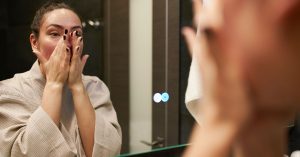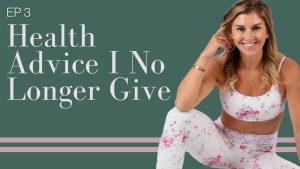Pilates Body vs. Gym Body: What’s the Difference?

Both Pilates and gym workouts offer great results for your body and health. But, Pilates might be better if you want to focus on core strength, mobility, and flexibility.
Would you rather take a Pilates class or knock out a bench press sesh? Choosing between Pilates and the gym can be tough, especially if you’re short on time or just starting out. The better option often depends on your goals and preferences.
Whether you want a toned physique or a strong core, this guide will help you find the fitness approach that fits you best.
Pilates and traditional gym workouts offer unique approaches to fitness goals, targeting different areas and providing distinct benefits.
Pilates
Pilates prioritizes toning, core strength, flexibility, and mental alignment. It primarily engages the deep abdominal muscles, obliques, lower back, and pelvic floor, focusing on controlled movements and core strength.
These exercises enhance core stability, posture, body awareness, and a strong mind-body connection. Pilates also improves cardiorespiratory fitness. Plus, it’s low-impact, perfect for beginner peeps not used to strenuous exercises, and you can do it at home!
Gym workouts
Gym workouts offer versatility in targeting various muscle groups and excel in muscle growth. Weightlifting, for instance, emphasizes specific muscles, like biceps, triceps, quadriceps, and pectorals, depending on the exercises.
You can also do cardio at the gym, like running or HIIT, to enhance heart health and stamina. Cardio also helps boost metabolism, helping you burn more calories overall.
So basically, choosing between a Pilates body and a gym body ultimately hinges on your fitness goals and preferences.
Pilates is oh-so graceful and precise. Undoubtedly, it’s an efficient way to tone the body. Here are seven ways that Pilates excels in the toning department, often surpassing traditional weightlifting.
1. Body weight
One of Pilates’ standout features is its cunning use of body weight as resistance. This approach turns your physique into the primary tool for building strength and toning muscles, offering an effective full-body workout without equipment. However, you can add a ball or a band if you fancy.
By employing controlled movements and engaging multiple muscle groups simultaneously, Pilates ensures that every part of your body is put to work, contributing to a comprehensive and balanced fitness regimen.
2. Core strength
Pilates is great for strengthening your core. Through controlled movements and precise exercises, it engages the deep abdominal muscles, obliques, and lower back like no other. It also promotes functional strength, making the movements you practice in Pilates highly applicable to everyday activities, making chores like carrying groceries a breeze.
3. Flexibility
The controlled and intentional stretching in Pilates takes your flexibility to new heights, leaving traditional weightlifting in the dust.
Pilates doesn’t just stop at a basic stretch. Oh no! With its dynamic stretching exercises, it’s like giving your joints a VIP ticket to the mobility party. Your muscles get a front-row seat as they elongate, your flexibility soars, and suddenly, you’re moving in ways you never thought possible.
4. Breathing
Pilates isn’t about striking perfect poses. It also harnesses super-duper breathing techniques to give your muscles a fresh oxygen cocktail for a show-stopping performance.
When you do a Pilates sesh, you’re inhaling and exhaling deeply with purpose. With every breath, you’ll feel your abdomen lift and pull in, sculpting your posture and helping you stand tall.
5. Inner thighs
Pilates doesn’t involve heavy lifting. Instead, it focuses on targeting inner thigh muscles with more finesse. While regular gym workouts can help, Pilates might be a more effective and precise solution for sculpting and toning these challenging muscle groups.
6. Fluid muscles
Pilates was originally designed to help train injury-prone dancers. This makes it a great workout for lean, fluid muscles. Plus, it helps boost mobility and is easier on the joints than weightlifting.
Pilates offers a holistic approach, enhancing core strength, flexibility, and muscle endurance, all while using body weight resistance. The gym offers versatility, allowing you to target and grow specific muscle groups with weights and machines.
Each has its unique charms, so choose which makes you excited to break a sweat. And hey, if you can’t decide, you can always do both!








